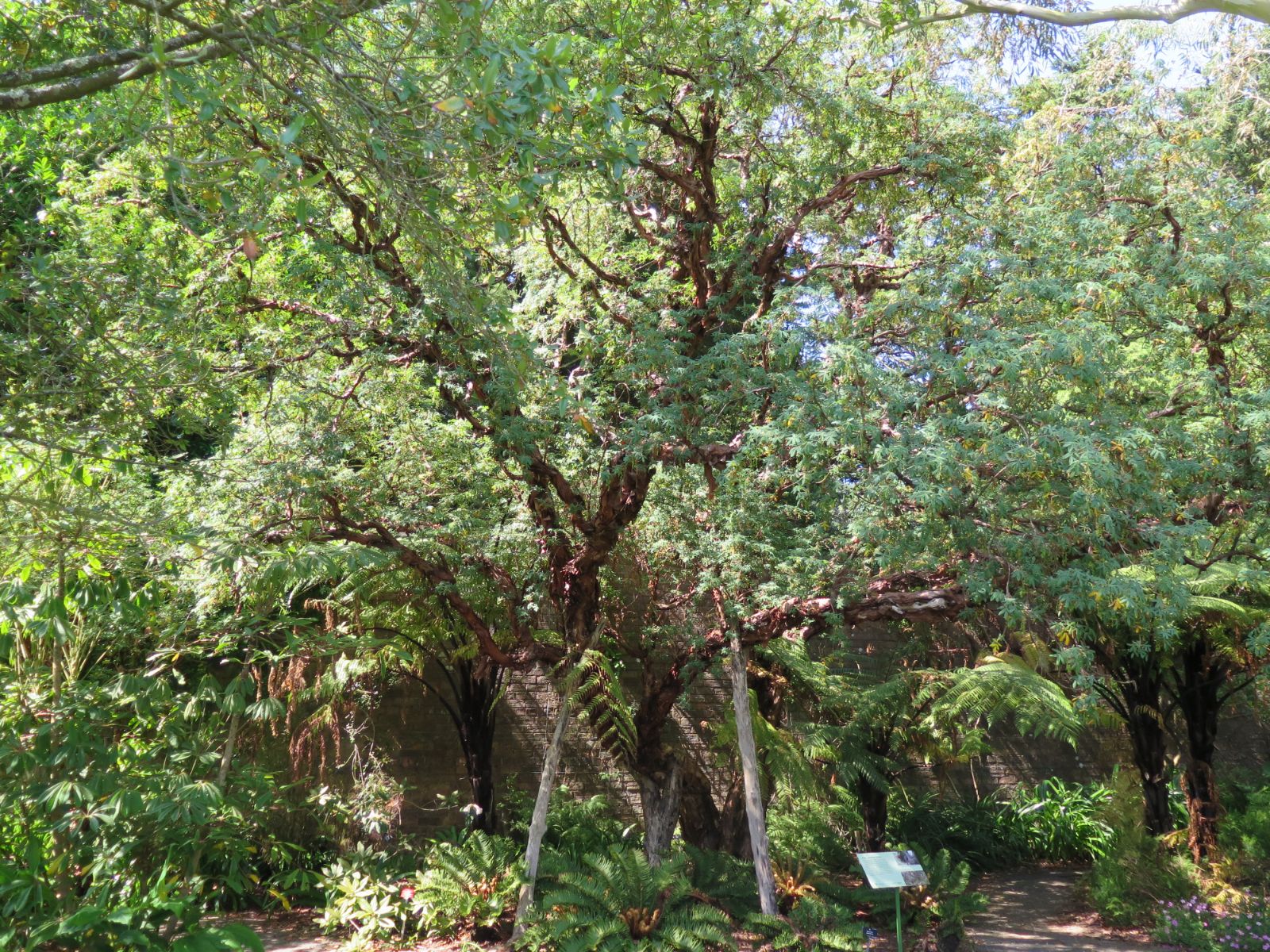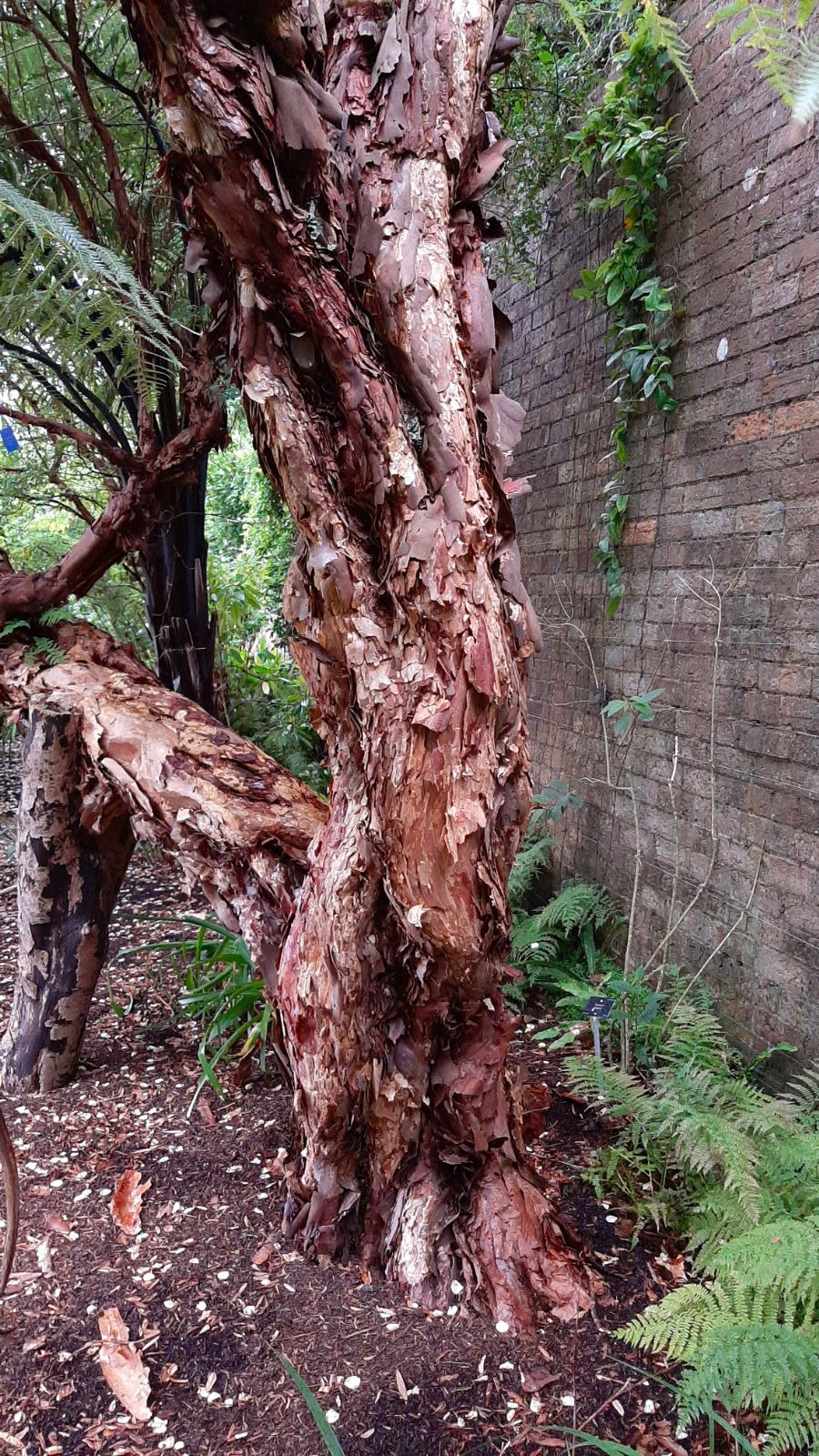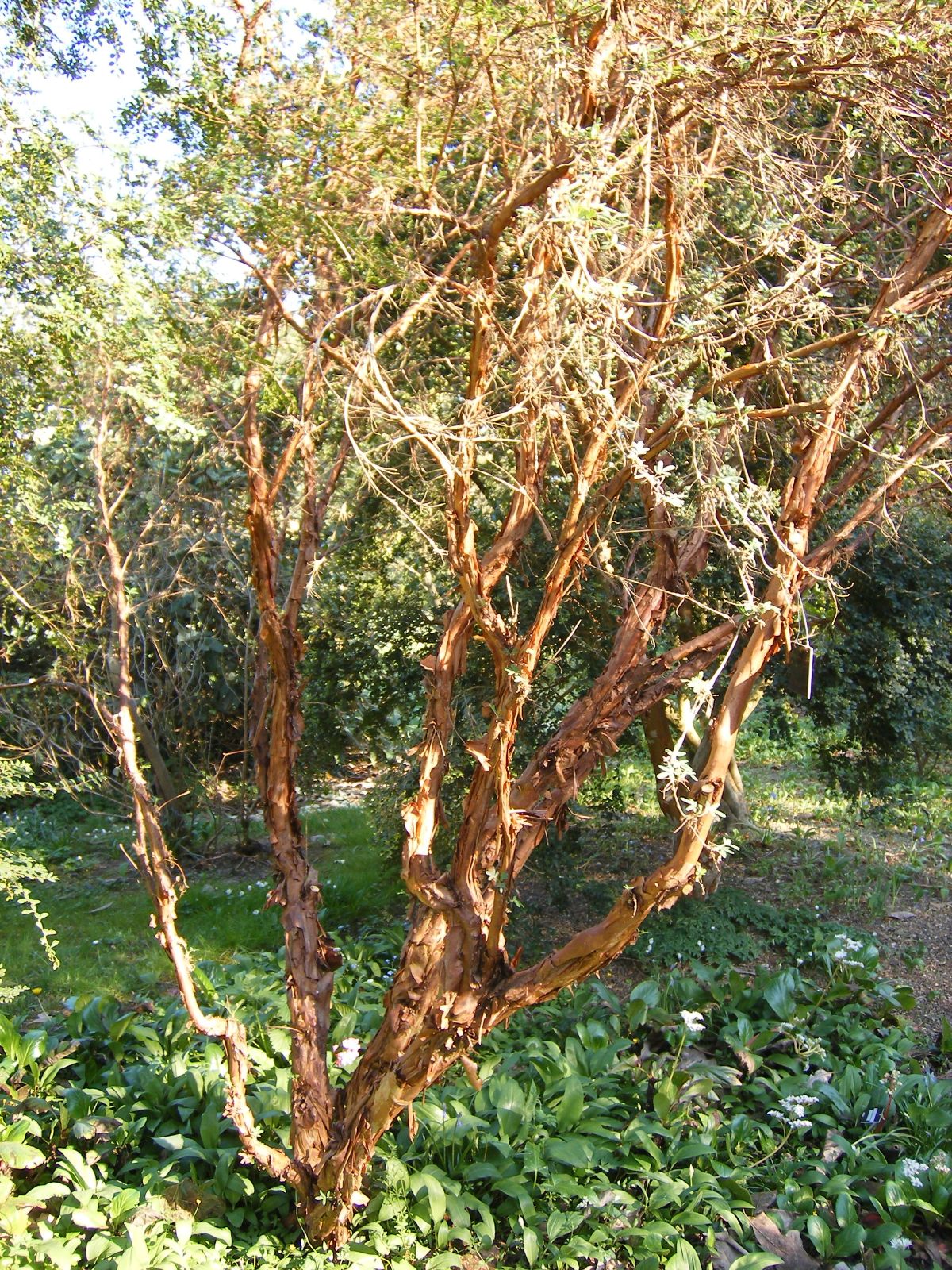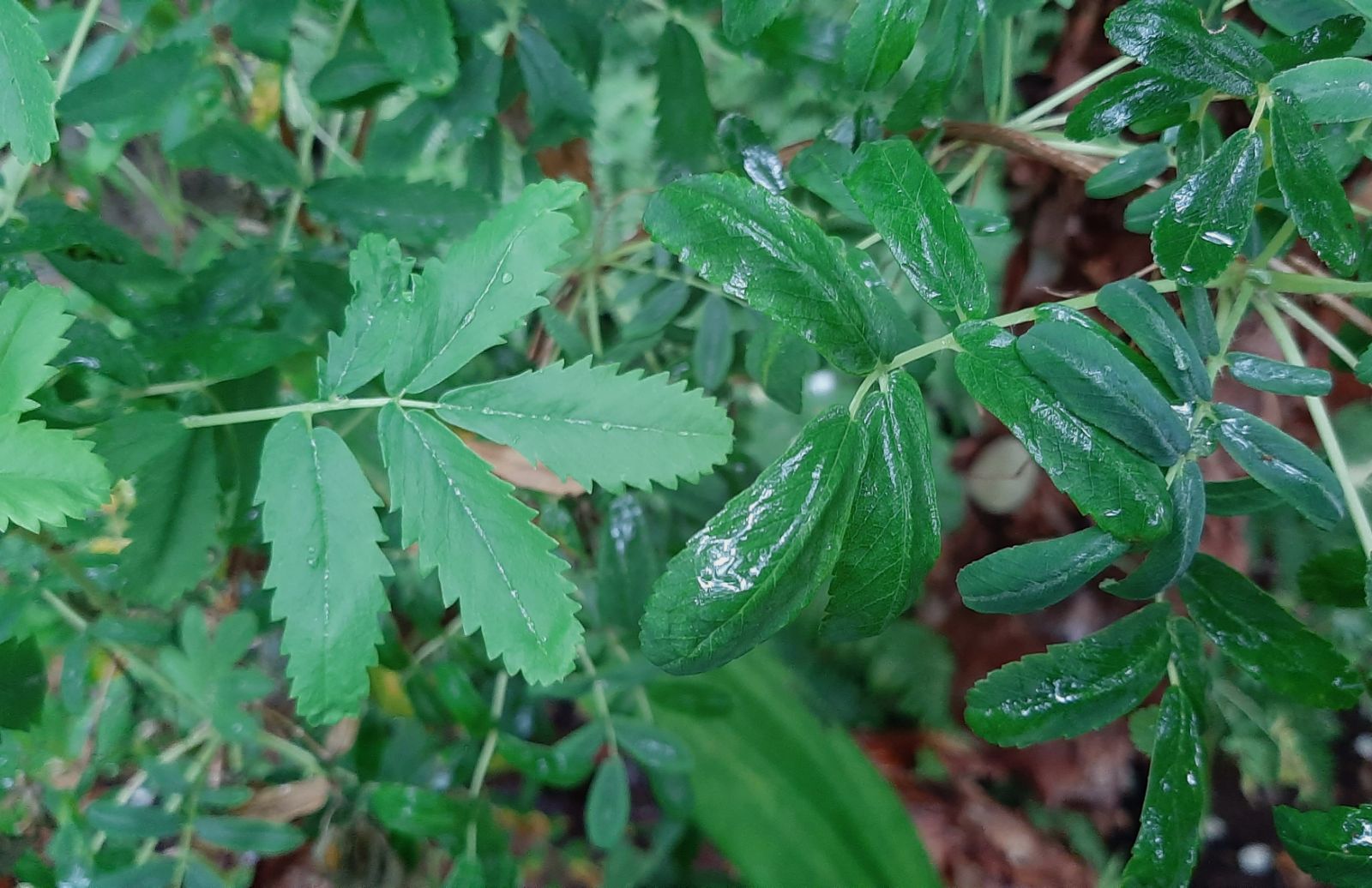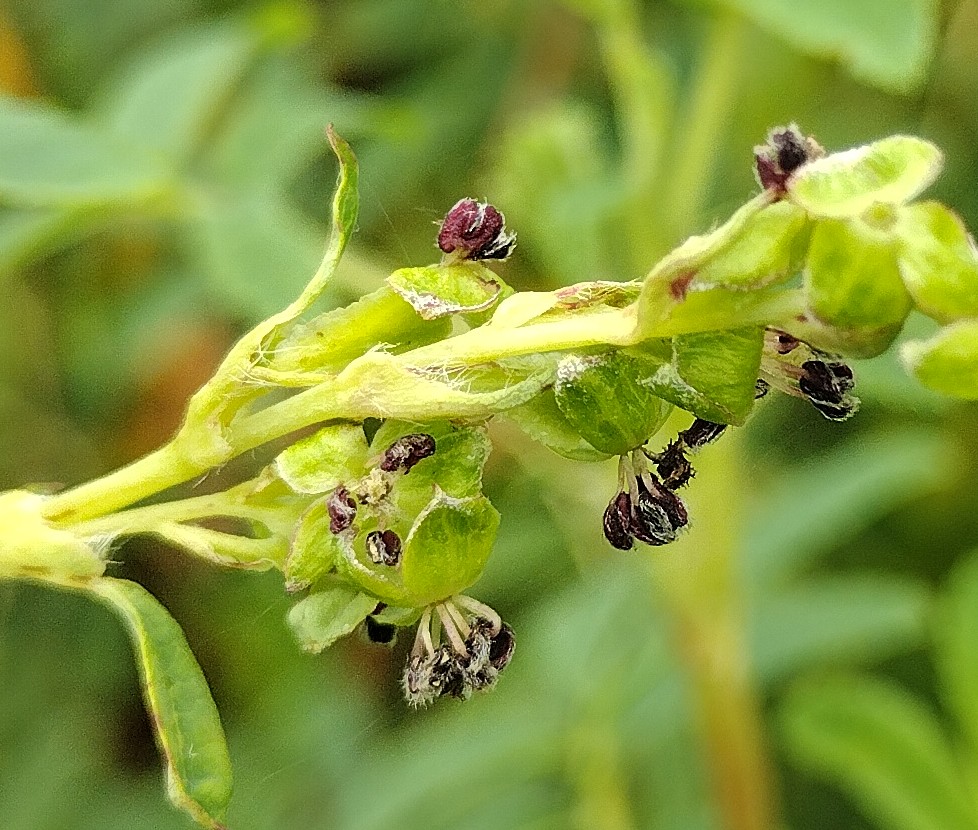Polylepis australis
Credits
John Grimshaw & Ross Bayton (2022)
Recommended citation
Grimshaw, J. & Bayton, R. (2022), 'Polylepis australis' from the website Trees and Shrubs Online (treesandshrubsonline.
Genus
Common Names
- Queñoa
- Tabaquillo
Other taxa in genus
Tree 1.5–10 m. Bark reddish brown, flaking and peeling in layers; branchlets also showing peeling bark. Leaves congested at branch apices, 2–7.2 × 1.8–5.3 cm, imparipinnate with (one to) two to three pairs of leaflets; rachis glandular with tufts of white trichomes at the point of leaflet attachment; leaflets broadly lanceolate to obovate, 1–4 × 0.3–1.5 cm, both surfaces glabrous or densely glandular, with a few scattered, twisted trichomes, margins crenate, apex obtuse; petiole long; stipules glabrous and/or glandular on the outer surface, with long white trichomes protruding from the inner surface. Inflorescences pendent, 1.8–7.3 cm long with 2–12 flowers and lanceolate floral bracts. Flowers hermaphrodite, 0.7–1 cm diameter, sepals three or four, stamens 8–16. Achene turbinate, with irregular and pronounced wings. Flowering June to July, October to April (Argentina). (Simpson 1979).
Distribution Argentina Catamarca, Córdoba, Jujuy, Salta, Tucumán.
Habitat High-altitude forests in the Altiplano, between 1200 and 2900 m asl.
USDA Hardiness Zone 8
RHS Hardiness Rating H4
Conservation status Not evaluated (NE)
Polylepis australis is an exceptional small tree, with extraordinary ‘millefeuille’, shiny reddish brown bark, peeling in thin sheets and adding to the layers already exfoliated. Where these layers have finally been shed the surface is beautifully smooth; it certainly ranks among the finest of all ornamental barks. The pinnate foliage is pleasant, and forms a rounded canopy over the usually multistemmed tree. The small greenish flowers are insignificant but abundantly produced. Native to the Argentinian Andes and forming high-altitude woodlands there, P. australis should not be considered to be a tender plant. Krüssmann (1985) recorded that it was first introduced to the Copenhagen Botanic Garden in 1949, from seed collected at 2600 m in Tucumán, by J.P. Hjerting. A specimen planted outside in Copenhagen in 1962 was 3.1 m tall by 1975, forming a good bushy plant, that could be considered hardy in Danish conditions (Olsen 1976). It died in 1993 (J. Møller, pers. comm. 2008). The earliest accession date traced in the United Kingdom is 1972, for a plant at the Royal Botanic Garden Edinburgh, also grown from a collection made by J.P. Hjerting. This is very healthy, currently about 4 m tall with a dbh of 20 cm (M. Gardner, pers. comm. 2008). The biggest specimens in the United Kingdom are all on the west coast, however, including a very fine specimen at Logan (grown from S. Ødum 6766, collected in Provincia de Salta, Argentina and planted out in 1981), about 6 m tall with two major trunks of 30 cm and 24 cm dbh, and a similarly sized one at Calderstones Park, Merseyside (Johnson 2007). It is possible that it appreciates the higher rainfall of the west, as it is evidently not dependent on mild westerly conditions. There is a 4 m tree in Dundee University Botanical Garden, planted in 1980 (Johnson 2007), and a younger plant is growing well (currently 2 m tall) in sticky clay at the Cotswold Garden Flowers nursery in the Vale of Evesham, Worcestershire [but this was killed in the 2010 winter (JMG pers. obs)]. The Logan tree seeds freely, and seeds and seedlings are sold to visitors (B. Unwin, pers. comm. 2006). Seed is probably the easiest method of propagation, and young plants soon show flaky bark. Some variation is evident in cultivated material.

